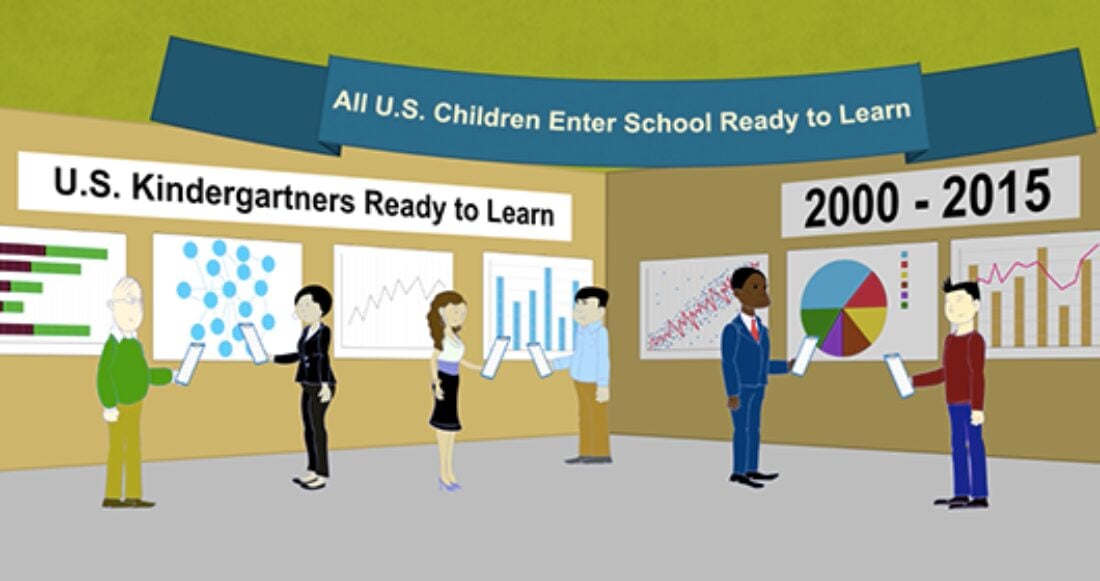"Data Walk" Is a Key Tool in Results-Based Leadership

Picture a large group of people walking in pairs around a meeting room scrutinizing big, detailed bar graphs, tables, pie charts and stories posted on the wall. The small groups are talking about how these data came to be and what they mean. It’s called a “data walk” and it’s an ideal way to get stakeholders collaborating to assess and improve outcomes for children and families.
Data walks are one of the many tools of results-based leadership. They foster conversations about current standings for a targeted population of children and families and what necessary data might be missing. These walks help groups reach agreement on which data to use in developing strategies to achieve goals and track progress.
A new, animated Casey Foundation video demonstrates how you can rely on data walks to accelerate group work for improved outcomes.
A large banner in the front and center of the room spells out the desired outcome and serves as a call to action — for instance, “All U.S. Children Enter School Ready to Learn.” The data posted around the room, then, lets the group know where their community, city or state stands in achieving that outcome.
What’s the best talk for a data walk? Partners discuss the current situation for the targeted populations and the goal, with results broken down by demographics including race, gender, socio-economic status and geography. Participants look for disparities among different populations and use the data as a jumping-off point to discuss ways to address inequities.
Urging participants to pair up with people they don’t know during the data walk helps build relationships within the group. A discussion guide can help participants with a series of questions on the overarching goal and what data tells them about progress — or lack thereof — in achieving it. Participant reactions and perceptions are noted.
After the data walk, the meeting facilitator invites group members to discuss their insights and ideas on achieving the goal and measuring improvement toward that end. A key factor is discussing how data made members feel since the review of data can elicit emotional responses that often help move people to action with more urgency.
For a new group just forming, a data walk can be a good first activity to help the group meld and have conversations — informed by data — about the developing work. Established groups can rely on periodic data walks to build mutual trust and understanding, solidify strategies to achieve common goals and establish targets for measurable achievement in improving outcomes for children and families.






